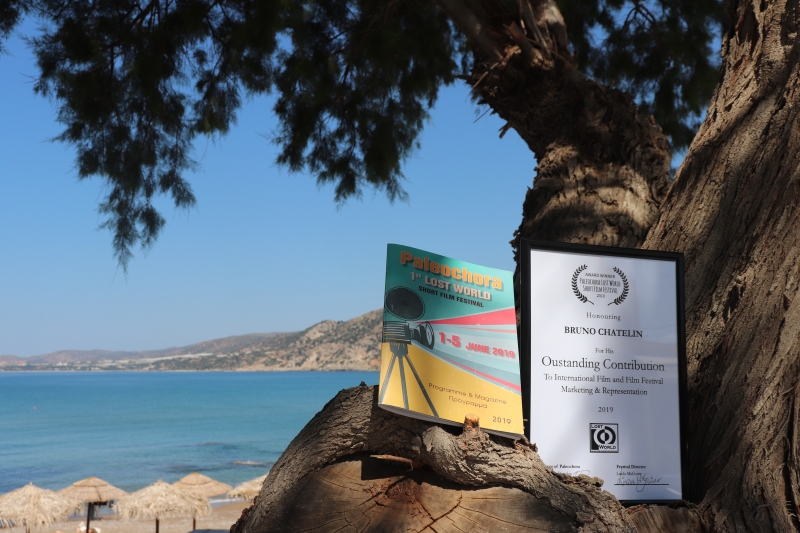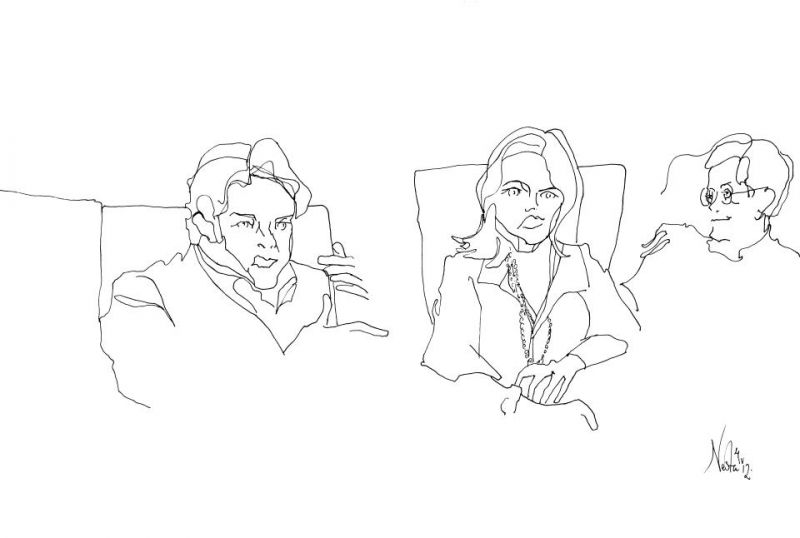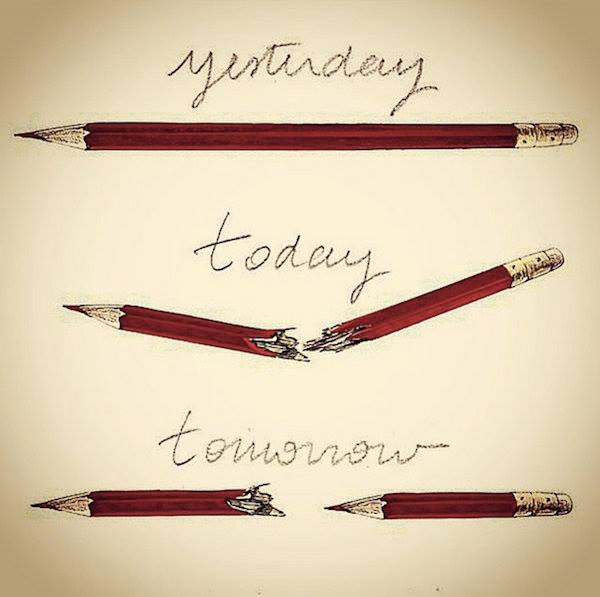International Festival for Cinema and Technology began its 4-day run in the screening room of New York’s Remote Lounge last Saturday.
The Remote Lounge is the futuristic East Village bar that is scattered with 50 some odd mini video cams and microphones. Patrons can sit down at control station tables and edit their own live reality t.v. show by flicking between cameras and even tele-flirt with someone in another part of the bar. On face of it, this would seem to be the perfect venue for a festival concerned with new technologies. However, with all this new digital technology at its fingertips, the IFCT ran smack dab into a very old fashioned analog problem – a major snowstorm– which closed the local airports and caused a myriad cancellations from invited guests.
Festival organizer, Marisa Cohen (who had to take a bus in from Pennsylvania after her flight was diverted) did a heroic job of getting the festival started sans technicians. Needless to say, attendance was sparse that evening. Those of us who waded through the snow were pleasantly surprise by the eclectic mix of films with some real treasures. By Sunday more people had arrived, including several film directors from Los Angeles and Germany. The trend continued as the snowstorm dwindled and by Tuesday the screening room was at full capacity. The low-key bar atmosphere provided a great environment for ad hoc conversations with directors, producers, writers and actors who were in attendance.
The closing night included several screenings and the awards ceremony was held at the screening room of the upscale Tribeca Grand hotel which offered real movie theater seating and a better projection system. Directors, producers, organizers and audience members met in the bar afterwards to discuss the films.
All very informal and fun.
I had a lot of questions for the festival director, Issac Alexander, about the content of the festival which seemed to cover a broad mix of films both in terms of content and technique. He explained to me that the festival deals with technology in several ways. Some films deal with technology in terms of their content; several films, for instance, covered the history of technologies or take a critical look at technology. The film media itself often represents an experimentation or advance in technology. Canadian directors Mitch Perkens’ and Rick Palidwor presented “Sleep Always” using a self-invented technology they call “super-duper-8”, a modified widescreen super 8 format. “Cyberheidi in 3D”, directed by German Ingo Knopf used a new 3D camera for the first time. Sometimes, film makers try to push the limits of older technologies. Steve Bilich filmed “Native American in Manhattan” with a 1920 hand-crank Cine-Kodak camera. In addition to presenting 3-D animation, the festival also chose to screen some 2D, hand drawn animations. “Its not completely digital,” Alexander stated. “People are still doing interesting things with 16 and 8 mm so we did not want to leave that out.” In fact, the IFCT began as an alternative to its sister festival, the HDFEST, which takes only high definition video submissions. In the past, there was some confusion about high definition standards and the HDFEST had been receiving a lot of good submissions that were not technically HD. So it was decided to create a new festival that was open to many formats and techniques. The IFCT also experiments with technology in the presentation of the festival. Last London and Paris they produced a “5 pound Festival” where sound system, projector, and playback system together weighed less than a pound. In Toronto, a similar “10 pound festival” was produced with all films being run directly from a computer hard drive. In contrast to the HDFEST, the IFCT has no sponsors, it is more flexible, and has less burocracy. “A primary objective is that it gives projects, that have maybe fallen through the cracks or haven’t been giving the attention they deserve, a screening,” said Alexander.
Daniel Herskowitz
 Chatelin Bruno
Chatelin Bruno 


























